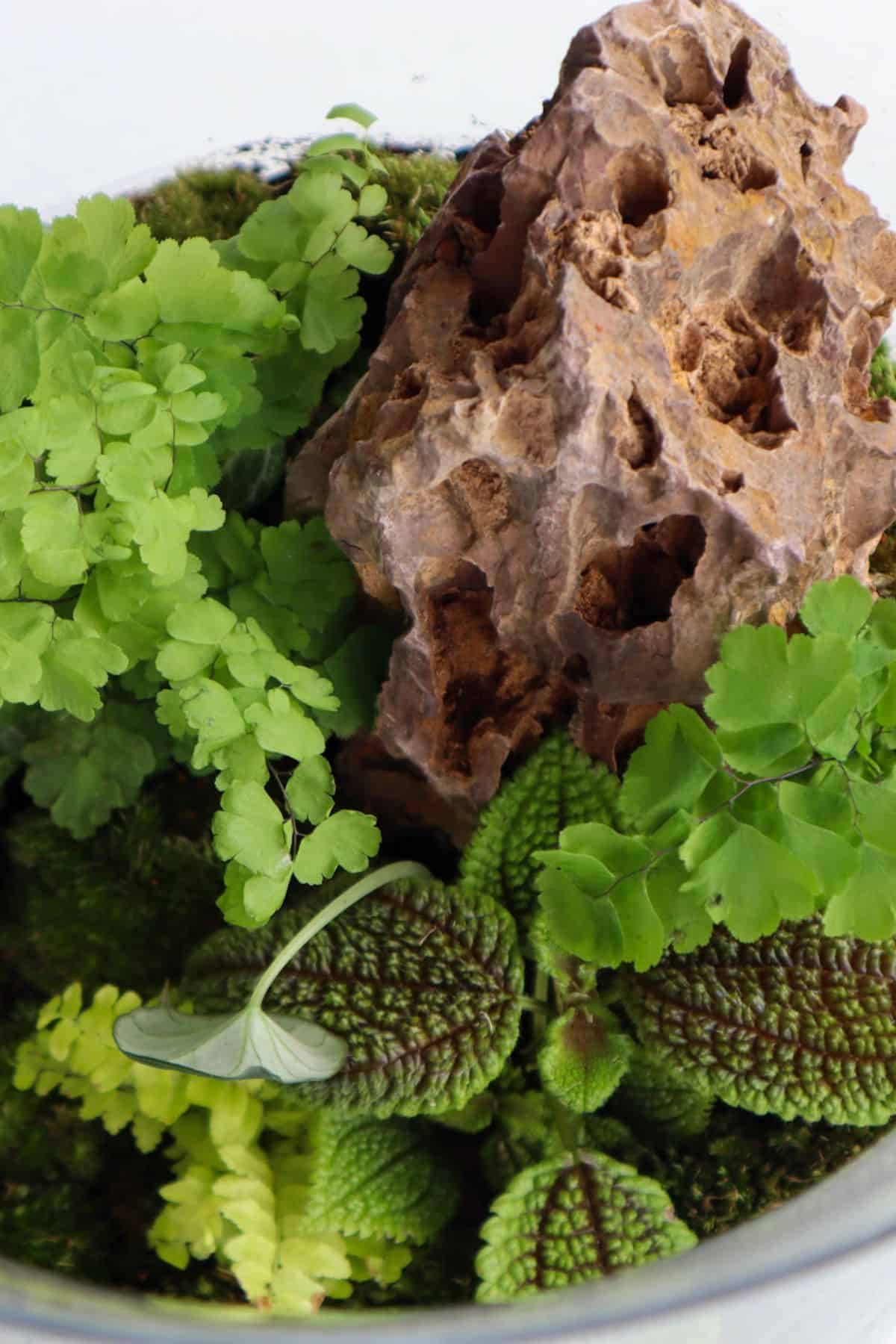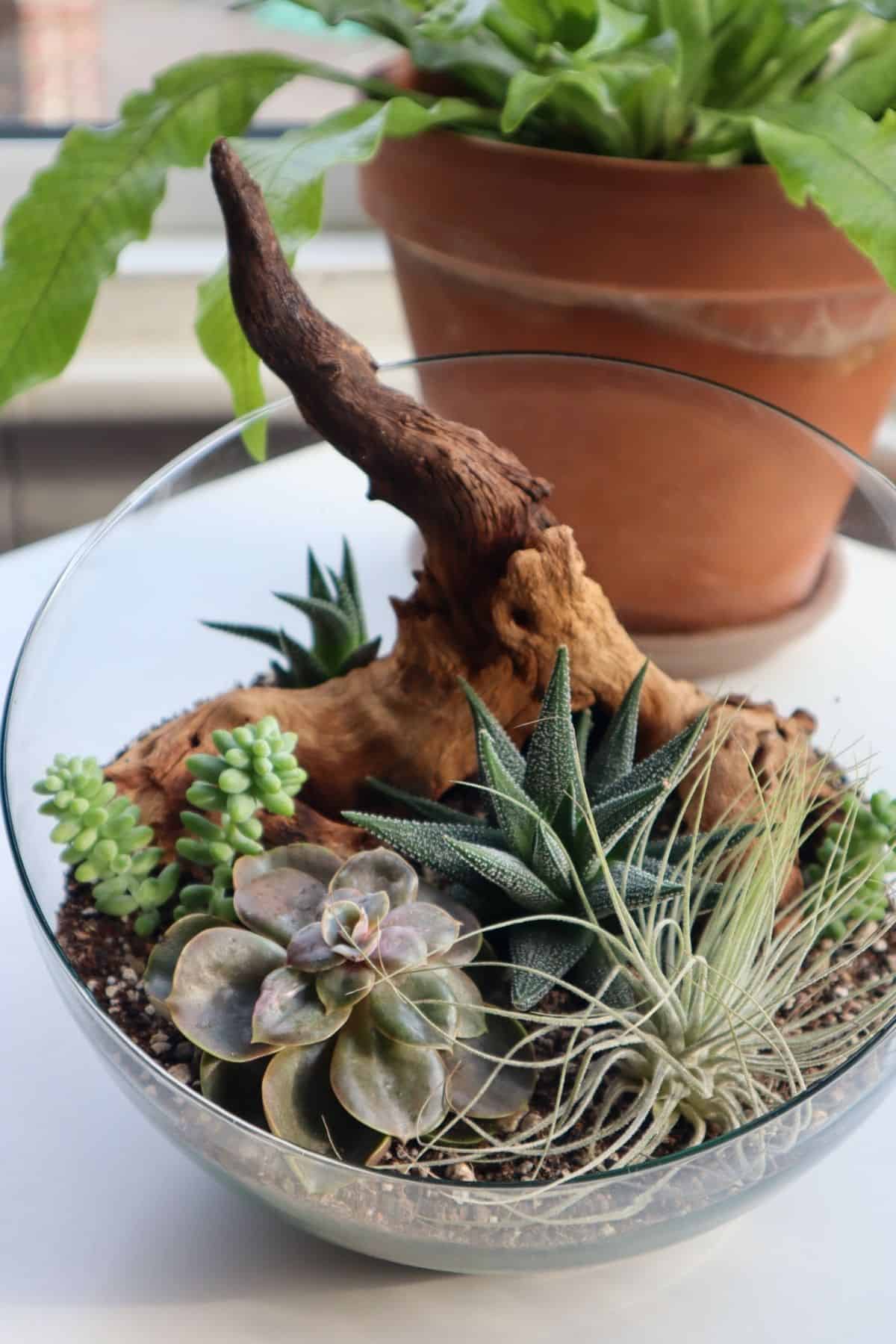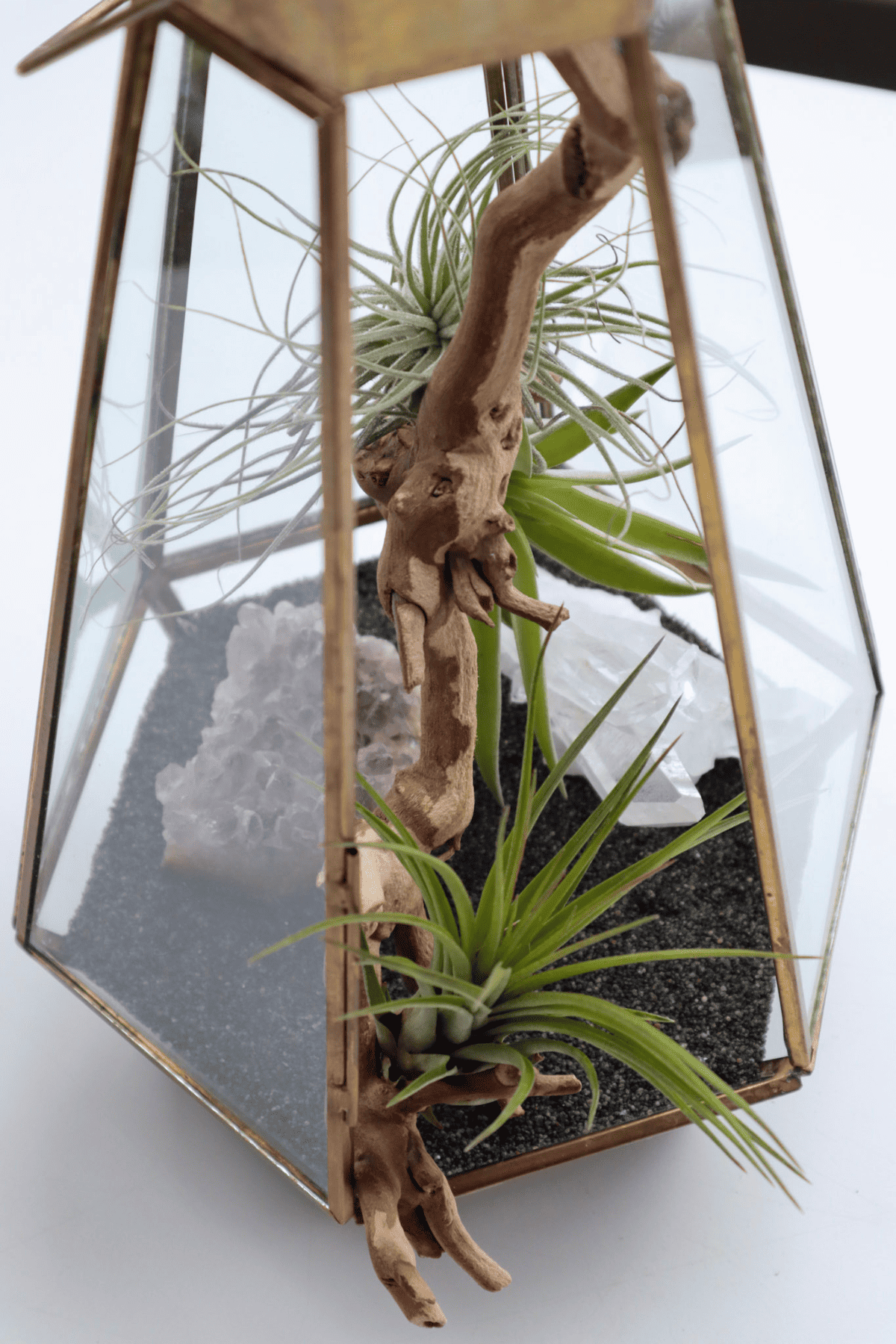These days, the art of terrariums has evolved to produce many weird and wonderful types of terrarium.
With steady improvements in technology and techniques – along with our greater understanding of plant environments – the potential for terrariums is seemingly limitless.
That being said, the vast majority of terrariums still fall into a series of distinct types.
In this article, you’ll learn all the different types of terrariums, and their complexity level in terms of plants, layout, and care. So you can identify what you’re ready to make and what you want to make.
Let’s dive in.

Terrarium Tribe is reader-supported. When you purchase through links on our site, we may earn an affiliate commission (at no further cost to you). 💜
The Main Types of Terrarium
In practice, there are two types of terrariums: open or closed.
The closed terrarium is the more classic type, designed for housing humidity-loving tropical plants. Whereas the open terrarium is designed for arid plants like cacti and succulents.
Most often the type of terrarium is driven by the type of plants that the terrarium looks to grow. Which in turn dictates their construction and composition. After all, different plants require different things.
You’ll find a dizzying degree of diversity within each terrarium type. Some may be simple houseplant upgrades, and others could be grand recreations of the Gardens of Babylon.
But, the general concepts are the same.
Whether you’re new to making terrariums or looking to expand your skills, there will be a type of terrarium that’s suitable for you right now.
The Tropical Closed Terrarium
Like the fern-obsessed Victorians before me, I love how much terrariums enable us to grow all kinds of rare and exotic plant species.
For me, this is where the real fun starts.
In essence, a tropical terrarium is one that grows tropical plant species. Simple right?
As you might imagine, all kinds of different terrariums fall into this type. But they all require the high humidity, temperature, and moisture of a closed terrarium. The best thing? Tropical terrariums have access to the widest variety of plant species.
With high humidity, you can really take advantage of good terrarium mosses, lush ferns, and epiphytes (plants that grow on objects out of soil) to create some stunning terrarium landscapes.

Tropical plants can often be more challenging to care for than temperate ones, but tropical terrariums really are the point at which you can flex your creative flair and horticultural skills.
I believe every plant lover should try their hand at a tropical terrarium (you can always get started with a simple moss terrarium).
👉 Check out my full closed terrarium guide for more details.
Open Terrariums: Cacti and Succulent Terrariums
Succulent terrariums are crazy popular right now.
Who knew chunky desert plants would be so loved around the world?
Which is weird because they are genuinely one of the worst possible plant choices for a normal closed terrarium. So, you need to do things a bit differently.
Designed to thrive in desert conditions, succulents and cacti will rot so ridiculously fast in a humid terrarium environment.
Honestly, don’t do it. That’s why desert terrariums (succulent terrariums and cactus terrariums) are exclusively open – often in dishes and bowls – and require excellent drainage. You basically need a terrarium setup that can starve them of water.
What can I say? They thrive on neglect.

👉 See our full guides to open terrariums and desert terrariums for more info!
Air Plant Terrariums
To be honest, I struggle to justify calling this one a true terrarium.
Air plants (as the name suggests) acquire their water through the air. Meaning they don’t need soil, gravel… or just about anything a terrarium provides. Humidity helps.
They’ll generally survive anywhere you put them, so they’re great for ornamental terrariums that are more style than function.
Essentially, If you want a bulletproof terrarium that you can assemble in 5 minutes and is almost impossible to kill – an air plant terrarium could be for you.

Terrarium Type “Upgrades”
I call these upgrades because, fundamentally, they still fit one of the normal types of terrarium, but they take one or more elements to the next level.
And it often makes all the difference.
This is where the level of skill and complexity really play a part, and it can result in some of the most amazing terrariums out there.
Bioactive Terrarium
When you think of a terrarium as a self-sustaining ecosystem, a bioactive terrarium is the highest expression of that.
All good terrariums look to replicate the water cycle or at least provide effective drainage.
Bioactive terrariums go a step further by adding microfauna (the tiny animals of a particular region/ habitat) and developing the microbiome (bacteria, fungi, and protozoa).
The natural cycle that bioactive terrariums seek to replicate is the decomposition cycle.
The truth is most terrariums lack the ability to effectively break down plant material to fertilize the soil and further support the environment. That’s why we tend to remove this material ourselves in maintenance.
But bioactive terrariums attempt to create a truly self-sustaining ecosystem that’s able to regulate itself without our intervention.
👉 The easiest way to start? Add a springtails culture.

👉 See how to make a bioactive terrarium!
Landscape Terrarium
Landscape terrariums fascinate me.
They use terrarium hardscape elements (like rocks and branches) and substrate sculpting techniques to create natural-looking landscapes.
Landscape terrariums are often larger than regular terrariums, but they don’t need to be. That’s because what they all share is the key element of scale.
Scale and perspective are essential to recreating a natural environment on a miniature level and having it look… natural.

Expert terrarium artists will often use plants that resemble miniature trees (like Biophytum sensitivum) and experiment with mosses to give the illusion of grassy plains.
Of course, they still have all the same challenges as a simple plant terrarium, but now they also have a host of unique hurdles to clear. It’s part of the fun, right?
Over to You
Which of these types of terrariums is your favorite?
Mine is definitely the landscape terrarium, but I mostly make regular tropical terrariums myself.
Let me know in the comments!
Or, if you need more inspiration for your next build – check out our terrarium ideas post.

👍👍